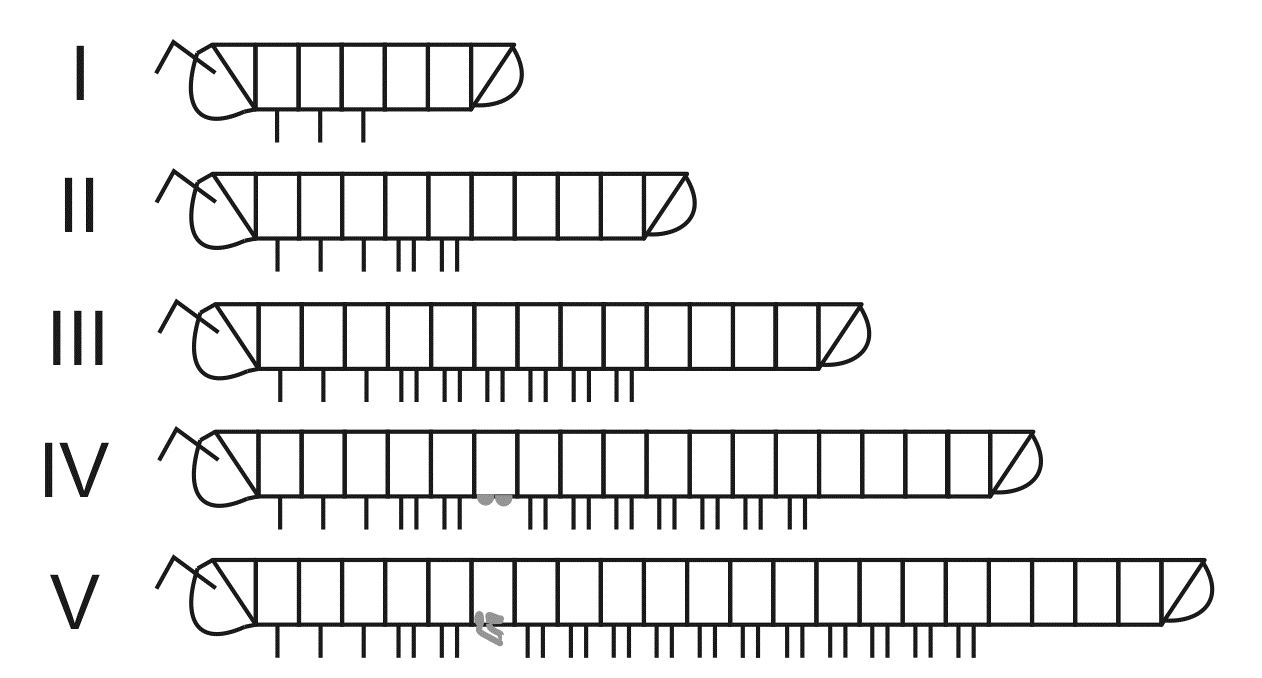Anamorphic development on:
[Wikipedia]
[Google]
[Amazon]
Anamorphosis or Anamorphogenesis refers to postembryonic development and moulting in  Protura hatch with only 8 abdominal segments and add the remaining 3 in subsequent moults. These new segments arise behind the last abdominal segment, but in front of the telson.
In myriapods, euanamorphosis is when the addition of new segments continues during each moult, without there being a fixed number of segments for the adult, teloanamorphosis is when the moulting ceases once the adult has reached a fixed number of segments, and hemianamorphosis is when a fixed number of segments is reached, after which moulting continues with segments only growing in size, not number.
Protura hatch with only 8 abdominal segments and add the remaining 3 in subsequent moults. These new segments arise behind the last abdominal segment, but in front of the telson.
In myriapods, euanamorphosis is when the addition of new segments continues during each moult, without there being a fixed number of segments for the adult, teloanamorphosis is when the moulting ceases once the adult has reached a fixed number of segments, and hemianamorphosis is when a fixed number of segments is reached, after which moulting continues with segments only growing in size, not number.
Arthropoda
Arthropods (, (gen. ποδός)) are invertebrate animals with an exoskeleton, a segmented body, and paired jointed appendages. Arthropods form the phylum Arthropoda. They are distinguished by their jointed limbs and cuticle made of chitin, ...
that results in the addition of abdominal
The abdomen (colloquially called the belly, tummy, midriff, tucky or stomach) is the part of the body between the thorax (chest) and pelvis, in humans and in other vertebrates. The abdomen is the front part of the abdominal segment of the torso ...
body segments, even after sexual maturity. An example of this occurs in protura
The Protura, or proturans, and sometimes nicknamed coneheads, are very small (0.6-1.5mm long), soil-dwelling animals, so inconspicuous they were not noticed until the 20th century. The Protura constitute an order of hexapods that were previously ...
ns and millipede
Millipedes are a group of arthropods that are characterised by having two pairs of jointed legs on most body segments; they are known scientifically as the class Diplopoda, the name derived from this feature. Each double-legged segment is a resu ...
s.
 Protura hatch with only 8 abdominal segments and add the remaining 3 in subsequent moults. These new segments arise behind the last abdominal segment, but in front of the telson.
In myriapods, euanamorphosis is when the addition of new segments continues during each moult, without there being a fixed number of segments for the adult, teloanamorphosis is when the moulting ceases once the adult has reached a fixed number of segments, and hemianamorphosis is when a fixed number of segments is reached, after which moulting continues with segments only growing in size, not number.
Protura hatch with only 8 abdominal segments and add the remaining 3 in subsequent moults. These new segments arise behind the last abdominal segment, but in front of the telson.
In myriapods, euanamorphosis is when the addition of new segments continues during each moult, without there being a fixed number of segments for the adult, teloanamorphosis is when the moulting ceases once the adult has reached a fixed number of segments, and hemianamorphosis is when a fixed number of segments is reached, after which moulting continues with segments only growing in size, not number. References